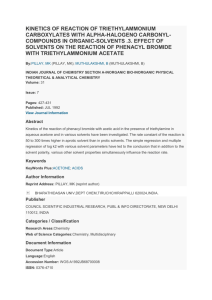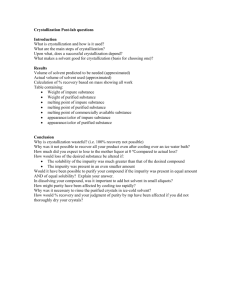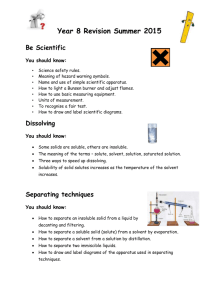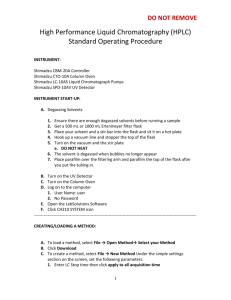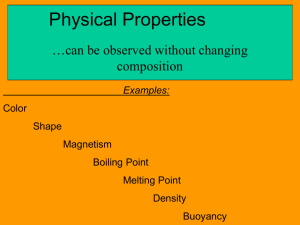Recrystallization of M(acac)3 complexes
advertisement
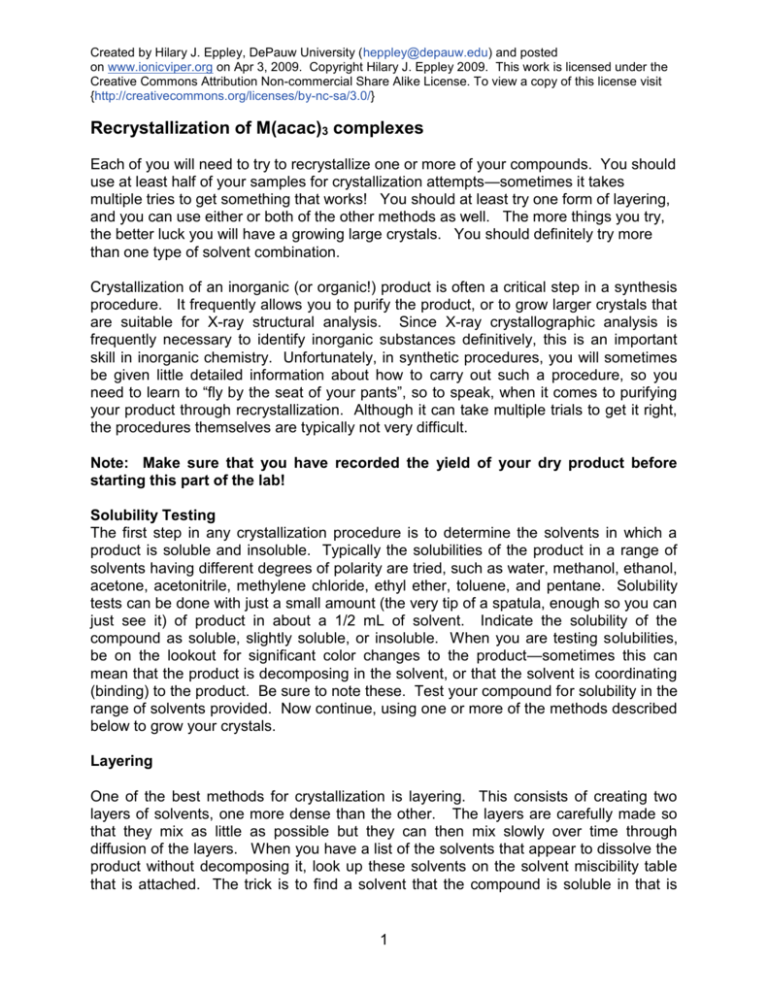
Created by Hilary J. Eppley, DePauw University (heppley@depauw.edu) and posted
on www.ionicviper.org on Apr 3, 2009. Copyright Hilary J. Eppley 2009. This work is licensed under the
Creative Commons Attribution Non-commercial Share Alike License. To view a copy of this license visit
{http://creativecommons.org/licenses/by-nc-sa/3.0/}
Recrystallization of M(acac)3 complexes
Each of you will need to try to recrystallize one or more of your compounds. You should
use at least half of your samples for crystallization attempts—sometimes it takes
multiple tries to get something that works! You should at least try one form of layering,
and you can use either or both of the other methods as well. The more things you try,
the better luck you will have a growing large crystals. You should definitely try more
than one type of solvent combination.
Crystallization of an inorganic (or organic!) product is often a critical step in a synthesis
procedure. It frequently allows you to purify the product, or to grow larger crystals that
are suitable for X-ray structural analysis. Since X-ray crystallographic analysis is
frequently necessary to identify inorganic substances definitively, this is an important
skill in inorganic chemistry. Unfortunately, in synthetic procedures, you will sometimes
be given little detailed information about how to carry out such a procedure, so you
need to learn to “fly by the seat of your pants”, so to speak, when it comes to purifying
your product through recrystallization. Although it can take multiple trials to get it right,
the procedures themselves are typically not very difficult.
Note: Make sure that you have recorded the yield of your dry product before
starting this part of the lab!
Solubility Testing
The first step in any crystallization procedure is to determine the solvents in which a
product is soluble and insoluble. Typically the solubilities of the product in a range of
solvents having different degrees of polarity are tried, such as water, methanol, ethanol,
acetone, acetonitrile, methylene chloride, ethyl ether, toluene, and pentane. Solubility
tests can be done with just a small amount (the very tip of a spatula, enough so you can
just see it) of product in about a 1/2 mL of solvent. Indicate the solubility of the
compound as soluble, slightly soluble, or insoluble. When you are testing solubilities,
be on the lookout for significant color changes to the product—sometimes this can
mean that the product is decomposing in the solvent, or that the solvent is coordinating
(binding) to the product. Be sure to note these. Test your compound for solubility in the
range of solvents provided. Now continue, using one or more of the methods described
below to grow your crystals.
Layering
One of the best methods for crystallization is layering. This consists of creating two
layers of solvents, one more dense than the other. The layers are carefully made so
that they mix as little as possible but they can then mix slowly over time through
diffusion of the layers. When you have a list of the solvents that appear to dissolve the
product without decomposing it, look up these solvents on the solvent miscibility table
that is attached. The trick is to find a solvent that the compound is soluble in that is
1
miscible with another solvent in which the product is insoluble.
Two solvents are immiscible if they form two unmixable layers like
oil and water, and miscible if they can be mixed (for crystallization,
you want the layers to eventually mix!). If you add enough of the
solvent that the product is insoluble in to a solution of the product
dissolved in a soluble solvent, product will precipitate from the
solution. The more carefully the solvents are added together, the
better the chance for large crystals!
Sample
Dissolve your compound in one of the solvents that dissolves the
product. Try to use a minimal amount of solvent (your solution
should be very darkly colored!). If the compound does not
dissolve completely in your initial solvent, you can remove small
particles by making a filter from a disposable pipette and a small
wad of a Kimwipe. Push the wad of paper into the pipette down
into the narrow part of the pipette with another long pipette. The
Kimwipe
Kimwipe will serve as your filter. Then run your solution through
the top of the pipette to filter it! After you have a solution of your
product you will have to add this together with the solvent that the
Crystallization
product is insoluble in. You can either add the insoluble solvent
vial
Top of NMR tube
very carefully on top of your solution of product, slowly dribbling it
down the sides of the vial using a pipette, the “top-down” method.
Alternatively, you can add the solution of product underneath the insoluble solvent, by
taking the pipette directly to the bottom of the vial and then dispensing the solution: the
“bottom up” method. If you use this method, stop before you have dispensed all of the
liquid so you don’t send up a big bubble that will disturb the layers.
Either way, you should do this recrystallization in a container that can be closed up very
tightly, such as a small vial with a screw-cap lid, Erlenmeyer with a stopper, etc.
Parafilm alone will definitely not work because some of the solvents will actually eat
through the parafilm. If you are careful enough, you should be able to layer one solvent
on top of the other so that you have two distinct layers. When these layers diffuse
together slowly, crystals will (hopefully!) form at the interface! Carefully put your
solutions somewhere it will not be bumped (like in the bottom cabinet of your lab
drawers) and check on them periodically to see if the crystals are growing. If you don’t
see crystals, make sure your solution hasn’t evaporated through a leaky lid, that the
initial solution of your compound is concentrated enough, and that you’ve added enough
of the insoluble solvent (adding more of the latter is a quick thing to try if you don’t get
crystals the first time). Note: when designing your layering, try to get the more dense
solvent (you can look up densities in the Aldrich catalog) to be the one that ends up on
the bottom, otherwise the layers will mix immediately upon adding the second one!
Vapor diffusion
Vapor diffusion is similar to layering in that you use two solvents that are miscible, one
that the compound is soluble in, and one that the compound is insoluble in. Make a
solution of the compound in the soluble solvent. Filter with a pipette as described
earlier to remove any small pieces of undissolved solid. Place that solution in a small
open vial. Then place that whole vial inside a bigger vial or screw-cap container of
some sort that contains a bit of the insoluble solvent. Being careful not to tip the open
vial, place a tight lid on the bigger vial. As long as the solvents are reasonably volatile,
they will change places over time and increase the concentration of the insoluble
solvent in the smaller vial until crystals form and precipitate out of solution.
Slow Evaporation
Slow evaporation is perhaps the easiest method of crystallization, however the timing is
very important to make sure that you do not let the solution go completely to dryness.
Make a concentrated solution of your compound in the soluble solvent and filter (as
explained above) to remove any undissolved particles. Place that solution in a small
glass vial. Then either put a cap on the vial very loosely (probably the better method) or
stretch some parafilm over the top of the cap and poke a couple of holes in it. The latter
method can be problematic if the solvent used dissolves parafilm (for instance
methylene chloride!). Keep checking on your solution to make sure to stop it before the
solution has evaporated completely.

